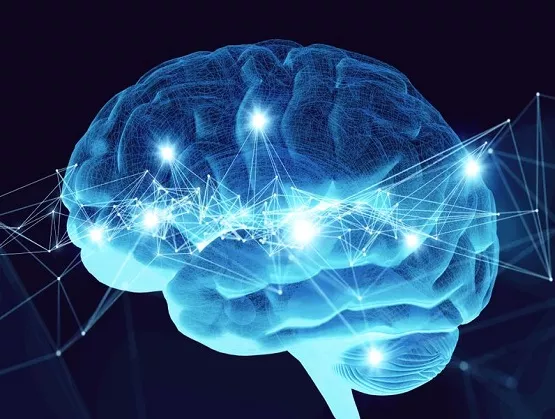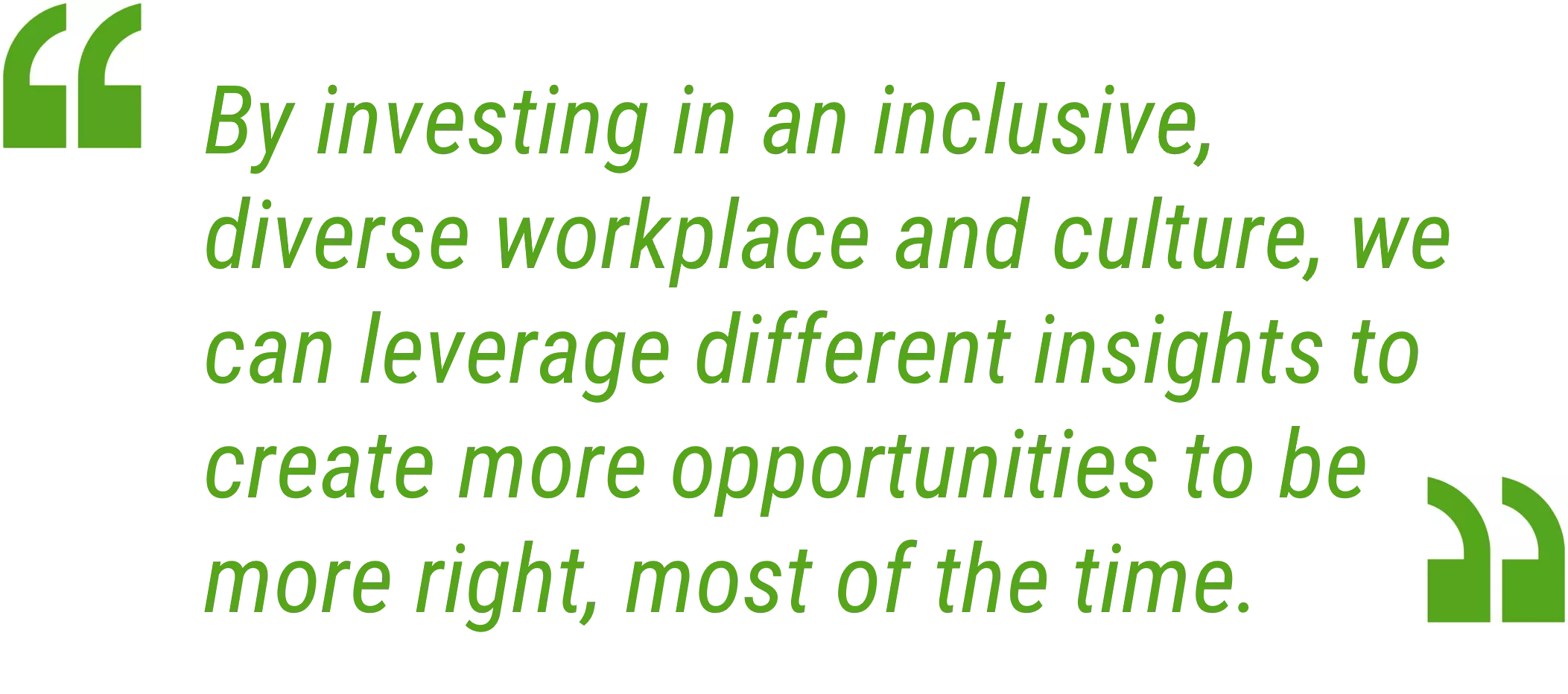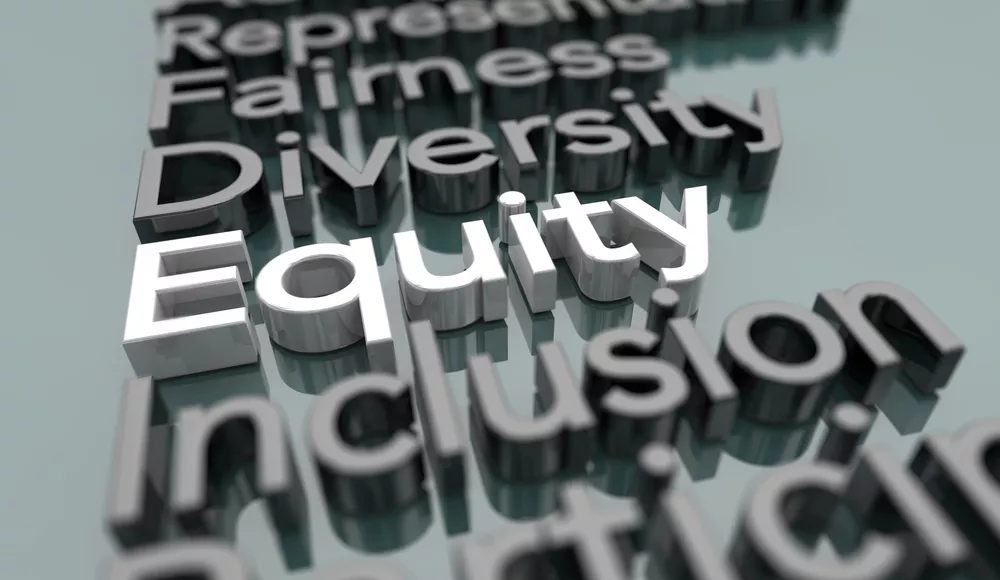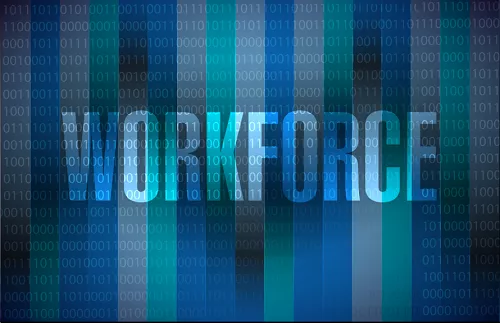
While studies show that workplace diversity helps companies boost innovation and financial results, many organizations struggle to implement diversity, equity and inclusion (DE&I) programs that make meaningful cultural change.
SEMI spoke with Georgina Janvier, Head of Transformation and Chief of Staff to the CEO of Electronics; David Mueller, Head of Chief Technology Office Operations; Claudia Mueller-Spohr, Transformation Communications Lead; and Judy Huang, Regional Communications Head at the Electronics business of Merck KGaA, Darmstadt, Germany about how companies must understand complex social interactions in work cultures before launching successful DE&I initiatives and the lessons they can draw from the latest neuroscience.

SEMI: Please tell us a bit about your roles at the Electronics business of Merck KGaA, Darmstadt, Germany.
Janvier: I have had the pleasure to work with many of our colleagues over the last three years on the strategic transformation of our business into a leading Electronics Materials supplier. DE&I is near to my heart. The contribution of each person’s unique qualities to a work culture always leads to the best outcomes. Whether it’s in innovation, strategy, marketing – you name it – a team that embraces unique perspectives and keeps the door open for new ideas always finds a way.
Mueller: At the Electronics business of Merck KGaA, Darmstadt, Germany, I’ve worked many years in strategy and strategic marketing positions, visiting many countries to learn about our global markets. Getting familiar with diversity firsthand really helped me understand the great benefits but also challenges of diverse teams. As a strong believer in diversity, I have a deep interest in distinguishing why some diverse teams outperform while others do not. During my MBA program, I wrote my master thesis on organizational psychology, which solidified my interest in the neuroscientific foundations on DE&I.
Mueller-Spohr: I lead the transformation communication at Electronics. In my role, I drive communication for strategic global transformation projects to help keep employees and key stakeholders engaged about our cultural and DE&I initiatives.
Huang: I drive communications in the regions for our Electronics business. Although based in Taiwan, I work closely with my colleagues across Asia, the Americas and Europe, so I have experienced the beauty and power of DE&I. I work to ensure that in communications, our key messages transcend regions, cultures and languages to inspire people to take action.
SEMI: How is DE&I influencing strategy and culture? What are your ambitions and how will you achieve them?
Janvier: The short innovation cycles we face constantly require new perspectives to help us solve the industry’s challenges. Our vision is to remain the company behind the companies that advance digital living and to fulfill the full promise of the DE&I initiatives we have been driving for many years. We recognize that DE&I is a business imperative. Diverse companies are up to six times more innovative and agile, so DE&I is critical to strengthening and sustaining our ability to meet diverse customer needs and remain on the leading edge of innovation.
 We have set clear ambitions to achieve by 2030 here at the Electronics business of Merck KGaA, Darmstadt, Germany, which include increasing women in leadership positions from 35% to gender parity, increasing the global share of Asian, Latin American, Middle Eastern and African leaders (director level and above) from 16% to 30%, and increasing underrepresented racial and ethnic groups from 20% to 30% among our U.S. leaders.
We have set clear ambitions to achieve by 2030 here at the Electronics business of Merck KGaA, Darmstadt, Germany, which include increasing women in leadership positions from 35% to gender parity, increasing the global share of Asian, Latin American, Middle Eastern and African leaders (director level and above) from 16% to 30%, and increasing underrepresented racial and ethnic groups from 20% to 30% among our U.S. leaders.
The nature of innovation is that sometimes ideas stick and sometimes they don’t. But by investing in an inclusive, diverse workplace and culture, we can leverage different insights to create more opportunities to be more right, most of the time. That’s the ultimate goal, but at present DE&I as a business must-have is still not yet fully understood. So, we need to first address where DE&I starts, which is in our heads.
SEMI: How did the Brain@Work training program come about? What are you aiming to achieve?
Mueller: Nobel laureate and theorical physicist Richard Feynman famously said “What I cannot create, I do not understand.” While we can only aspire to be in the same Nobel prize-winning ranks as Feynman, we are earnestly curious minds who want to understand the science behind DE&I from the bottom up. As a science-driven organization, we believe understanding the neuroscientific foundations of why we act the way we do will help our employees to better grasp the mechanisms behind DE&I and incorporate inclusive behaviors into daily life. Our Brain@Work training helps us better understand the link between DE&I and innovation by using a tangible methodology backed by science. So we hope to expand DE&I into company-wide culture rooted in logic.
SEMI: Many organizations still face challenges in implementing successful DE&I initiatives. How does your Brain@Work program address these challenges?
Mueller: The issue is that our brains aren’t embracing diversity by design, and worse still, our brains routinely engage with biases and judgements that counteract DE&I. Our brains are wired to work as prediction machines that make sense of our world based on past experiences. If our brains fail to understand and predict their environment, we enter a state of uncertainty, a state our brains try to resolve by all means. The renowned neuroscientist Professor Karl Friston observed that “nearly all our behaviour can be understood in terms of such uncertainty-minimising drives.”
 In simpler terms, our brains are confronted with a dilemma: While minimizing uncertainty is the motor for curiosity, exploration and learning, we also need to sustain and manage the certainty levels we’ve gained. That’s why we tend to avoid uncertain situations, seek familiarity and in situations of high uncertainty, and often opt for a defensive or reserved position. The naturally high levels of social uncertainty in raw diverse teams are uncomfortable and overwrites the explorative dispositions of our brains. In other words, the social uncertainty blocks our brains from engaging at our full innovative capacities. This is the core issue we aim to address with the Brain@Work program.
In simpler terms, our brains are confronted with a dilemma: While minimizing uncertainty is the motor for curiosity, exploration and learning, we also need to sustain and manage the certainty levels we’ve gained. That’s why we tend to avoid uncertain situations, seek familiarity and in situations of high uncertainty, and often opt for a defensive or reserved position. The naturally high levels of social uncertainty in raw diverse teams are uncomfortable and overwrites the explorative dispositions of our brains. In other words, the social uncertainty blocks our brains from engaging at our full innovative capacities. This is the core issue we aim to address with the Brain@Work program.
SEMI: Why is inclusion so important?
Mueller: You expect to be surprised in a world that is predictably unpredictable. You rely on a constant flow of prediction errors to adjust and self-organize in today’s dynamic environments. This works brilliantly as long as prediction errors and adjustments are reasonable and well in balance. Diverse teams, however, are groups with high social uncertainty because the many differences make them much less predictable, even unpredictable. Your flow is out of balance. Logically, reinstalling the balance has to come from resolving the social uncertainty.
And this is where inclusion comes into the play – at the core, inclusion is all about cleverly engineering social uncertainty levels. The aim is to reduce them enough so that everyone feels comfortable to bring their authentic selves and ideas to the table. So inclusion is more than simply reducing your personal uncertainty. It is a proactive reduction of uncertainty levels of the whole group. Only then can different perspectives be meaningfully leveraged to drive common goals.
SEMI: How do you communicate Brain@Work and other DE&I resources to your company’s global network?
Mueller-Spohr: We have dedicated many efforts towards education and enablement of DE&I topics throughout the organization. DE&I is a naturally complicated and abstract topic, so from a communications perspective the main goal is to make DE&I tangible and relevant. From offering training programs like Brain@Work, to creating a DE&I Manager’s Toolkit and a Q&A video series answering frequently asked questions about DE&I, we want to ensure employees have access to the language and tools to normalize and embrace difference.
 It’s also important to continually highlight common purpose. We are lucky that our global internal community is strongly connected by the shared goal to deliver first-rate, impactful solutions to our customers. And so we designed Brain@Work’s DE&I takeaways to always link back to our business aspirations. If the purpose is clear and resonant, then employees will be more open to reflective, culture-transforming programs.
It’s also important to continually highlight common purpose. We are lucky that our global internal community is strongly connected by the shared goal to deliver first-rate, impactful solutions to our customers. And so we designed Brain@Work’s DE&I takeaways to always link back to our business aspirations. If the purpose is clear and resonant, then employees will be more open to reflective, culture-transforming programs.
SEMI: How have employees from different countries reacted to the training? Did you have to account for cultural or geographical differences?
Huang: Brain@Work allows you to reflect about who you are and why you act the way you do. The program can be completed individually or in a group to better understand the underlying team dynamics. This helps to bridge not just cultural differences, but also personality differences as we all learn in unique ways. Because DE&I involves us all no matter where we are based, the core motivation is always to share what we learn as widely as possible. We are very pleased that the feedback has already been very positive from employees around the world. Employees feel proud that our company has developed such a thorough and engaging analysis of DE&I that facilitates both professional and personal development.
SEMI: What would you like the semiconductor and other industries to take away from your DE&I work?
Janvier: If digitalization trends, the pandemic, and modern consumer behavior have taught us anything, it is that future-oriented innovations drive business and the industry. Moreover, these innovations need to be delivered with greater speed and imagination. In the words of the brilliant Nobel laureate Linus Pauling, “the best way to have a good idea is to have lots of ideas.” And to achieve this, we need to embrace models of diversity, equity and inclusion, not exclude them.
Serena Brischetto is senior manager of Marketing and Communications at SEMI Europe.
